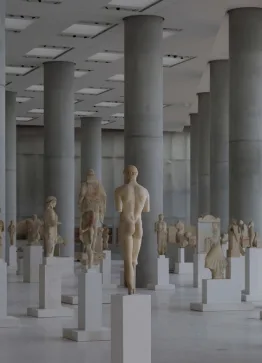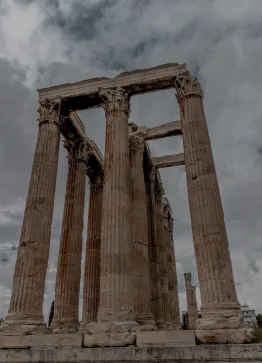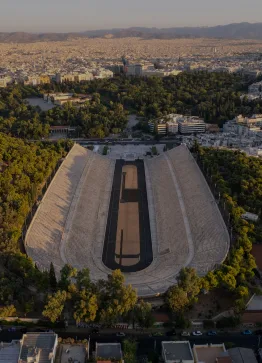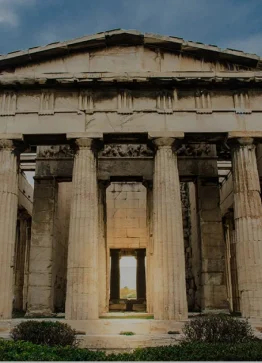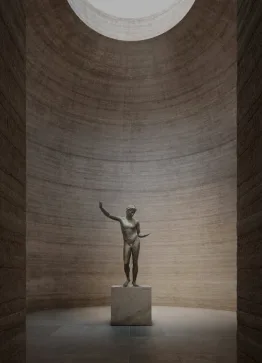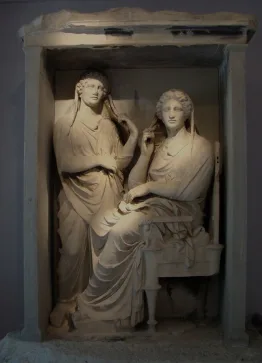Acropolis
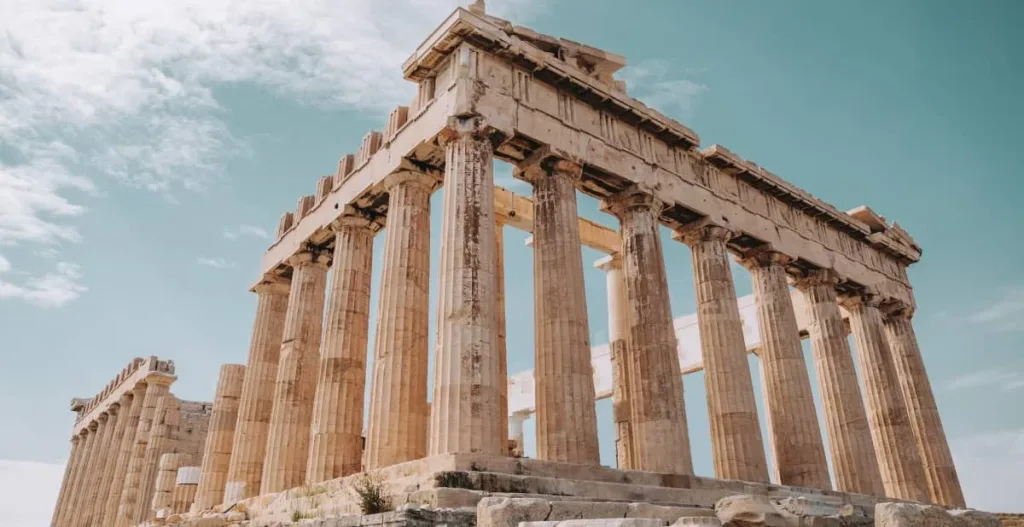
About the Acropolis
The Acropolis, a UNESCO World Heritage Site in Athens, is an ancient citadel that embodies the grandeur of Greek civilization. An Acropolis tour offers a journey through time and culture. Dominating the site is the magnificent Parthenon, a temple dedicated to the goddess Athena. Its Doric columns and intricate sculptures are awe-inspiring. Adjacent to the Parthenon is the Erechtheion, known for its Caryatid Porch with female statues as columns. The Propylaea, the monumental gateway to the Acropolis, serves as the grand entrance. Each building in the Acropolis tells a story of the past. Visit Acropolis to step into the history, and culture of Athens.
Don’t miss the Odeon of Herodes Atticus, a well-preserved amphitheater that hosts concerts and performances even today. The Temple of Athena Nike, with its delicate Ionic design, is another gem atop the Acropolis. Enjoy the stunning vistas of Athens as you tour the Acropolis. The sheer historical and architectural significance of this site is remarkable. It’s a place where ancient myths and legends come to life, offering a glimpse into the rich heritage of Greece.
Acropolis exploration is a rewarding experience that gives you the chance to connect with the creative and cultural accomplishments of a bygone age while admiring the grandeur of its lasting monuments.
History of the Acropolis
The Acropolis history is a testament to the enduring legacy of ancient Greek civilization. The Acropolis, which means “high city” in Greek, has been a site of human habitation since the Neolithic period, around 4000-3000 BC. However, its most famous phase began in the 5th century BC when Pericles, the Athenian statesman, initiated an ambitious building program.
The Parthenon, a structure devoted to the goddess Athena, served as the Acropolis’s crowning jewel. Construction of the Parthenon began in 447 BC and was finished in 438 BC. It is considered a masterpiece of classical Greek architecture and art, featuring the iconic Doric columns and intricate friezes. Other significant structures on the Acropolis include the Erechtheion, the Propylaea (the monumental gateway), the Odeon of Herodes Atticus, and the Temple of Athena Nike.
Throughout Acropolis history, the site has suffered damage, particularly during the Venetian siege in the 17th century and later explosions in the 17th and 18th centuries. However, extensive restoration efforts in the 19th and 20th centuries have helped preserve and showcase this ancient wonder. Today, the Acropolis stands as a symbol of Greece’s rich cultural heritage and a must-visit destination for travelers from around the world.
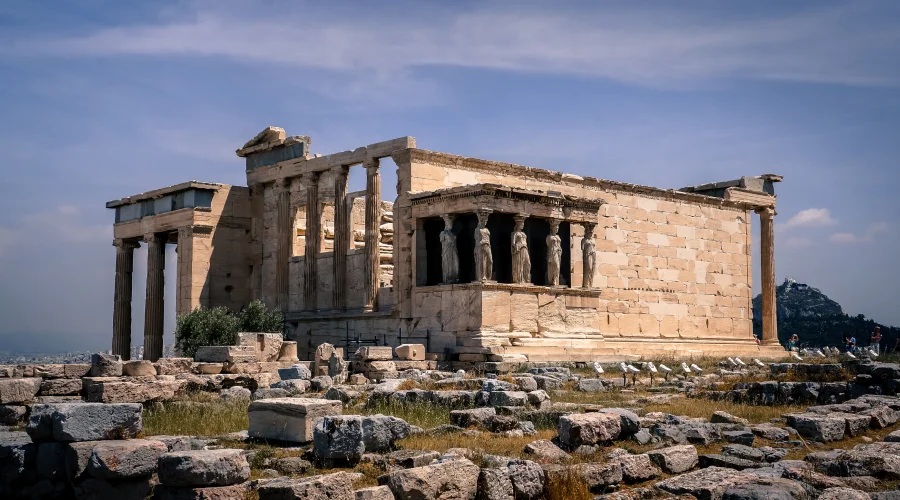
Tips for your visit
- Plan Ahead: Start by researching Acropolis tour options, including guided tours, self-guided visits, and combination tickets that include other archaeological sites.
- Early Arrival: Arrive early in the morning to avoid crowds and the heat of the day.
- Tickets: Purchase Acropolis tickets in advance online to skip the long ticket lines. Make sure to have your ticket confirmation ready.
- Acropolis Opening Hours: Check the opening hours as they can vary throughout the year.
- Comfortable Shoes: Wear comfortable walking shoes as you’ll be exploring uneven terrain and climbing steps.
- Respect the Rules: Respect the rules and regulations of the site. Avoid touching or leaning on the ancient structures.
- Parthenon Priority: Start your visit with the Parthenon, as it tends to get crowded quickly. Take your time to appreciate the intricate details of this iconic temple.
- Parthenon Priority: Start your visit with the Parthenon, as it tends to get crowded quickly. Take your time to appreciate the intricate details of this iconic temple.
- Erechtheion Marvel: Don’t miss the Erechtheion with its famous Caryatid Porch, known for its stunning female statues as columns.
- Panoramic Views: Take in the breathtaking panoramic views of Athens from the Acropolis. It’s a great spot for photos.
- Odeon of Herodes Atticus: Explore the Odeon of Herodes Atticus, an ancient amphitheater that still hosts performances today.
- Temple of Athena Nike: Visit the Temple of Athena Nike, dedicated to the goddess of victory. Its elegant Ionic design is a must-see.
- Respectful Behavior: Be respectful of the site and fellow visitors by not littering, being quiet, and refraining from graffiti or any form of damage.
Tickets
Make the most of your visit to this historic site and choose the Acropolis ticket option that suits you best. General admission costs 30€, making it accessible to most visitors. Non-EU youth aged 6-25 and EU seniors over 65 can enjoy a reduced rate of 20€. However, EU visitors up to 25 and non-EU visitors up to 5 years old can explore this iconic site for free. Don’t miss the chance to witness history at the Acropolis. Get your Acropolis tickets now and embark on a journey through ancient Greece!
How to arrive
Getting to the Acropolis in Athens is easy, and you have several transportation options:
By Metro: Take the Athens Metro Line 2 (the red line) and get off at the “Acropolis” station. The station is conveniently located within walking distance of the Acropolis entrance.
By Buses: You can also reach the Acropolis by taking public buses. Routes 24, 40, and 230 have stops near the Acropolis.
By Taxis: Taxis are readily available in Athens and can drop you off directly at the entrance of the Acropolis.
By Walking: If you’re staying in the city center, consider walking to the Acropolis, especially if you enjoy exploring on foot. It’s a pleasant walk from many central areas.
By Car: While you can drive to the Acropolis, it’s often recommended to park outside the city center and use public transportation to avoid traffic and parking challenges.

